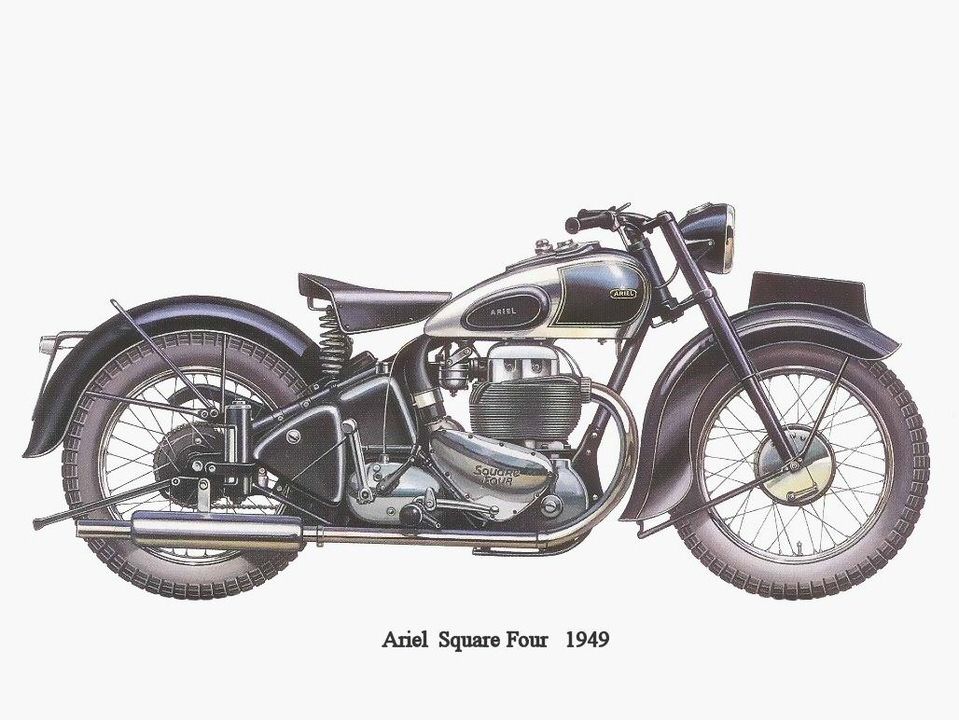
Related Content
MidAmerica Auctions at Motorcyclepedia Museum
MidAmerica Auctions Presents the Premier Motorcyclepedia Museums Spring Festival and Antique Motorcy.
1948 Triumph Speed Twin
A 1948 Triumph Speed Twin on display with other classic motorcycles at the Barber Vintage Motorsport.
1957 Douglas Dragonfly
A 1957 Douglas Dragonfly on display with other classic motorcycles at the Barber Vintage Motorsports.
Found on eBay: 1957 Ariel Red Hunter
Ariel Square Four
Years produced: 1948-52 (Mk1)
Total production: 1,211
Claimed power: 34bhp @ 5,400rpm
Top speed: 100mph (est.)
Engine type: Overhead valve, air-cooled square four
Weight: 197kg (433lb)
Price then: $658 (1952)
Price now: $5,000-$9,500
It’s all so effortless that I can barely believe the bike I’m riding is half a century old. On the open road, the 1952 Ariel Square Four is at home in modern traffic in a way that most classic British motorcycles cannot approach. It purrs along smoothly at 60mph, accelerates briskly out of roundabouts with barely a need to use its slick gearbox, and feels more up-to-date and sophisticated than many bikes half its age.
Admittedly, this image of contentment is upset on occasions, notably when the feeble brakes are needed urgently, or when the bike runs out of ground clearance with a loud clunk even at modest angles of lean. But most of the time, riding this 1952 Ariel Square Four is a reminder that even in days long-ago, the British motorcycle industry was capable of building machines that could deliver good performance and comfort with a genuinely refined feel.
Squaring with history
The Ariel Square Four was one of the most glamorous and best known British motorcycles. In production for 27 years, it was a mainstay in Ariel’s line of motorcycles.
Its story begins almost 80 years ago when, legend has it, a young engineer named Edward Turner — later to find fame as boss of Triumph — sketched a square four engined motorcycle on the back of a cigarette pack. Turner offered his design to a string of motorcycle manufacturers before being hired by Ariel in 1928.
Turner’s innovative design featured chain-driven single overhead camshafts, and was effectively two parallel-twin engines with their crankshafts geared together and turning in opposite directions. This had the advantage of being not only very well-balanced but also compact, which allowed the original 497cc engine to be fitted to a slightly modified Ariel single-cylinder chassis, saving the firm from Selly Oak in Birmingham both money and development time.
Ariel launched the original 500cc Square Four in 1930 and added a more powerful 600cc version two years later, mainly for the benefit of the many owners who added a sidecar. But Turner’s engine design had many problems, especially overheating of the rear cylinders. In 1937, after Turner had left Ariel, these problems were addressed by Val Page, another of the British motorcycle industry’s most famous names, with a revamped pair of Square Fours in 600 and 1000cc capacities, known as the 4F and 4G, respectively.
Page’s design tackled the overheating problem by adding fins to the cylinder head, plus a tunnel between the two front cylinders to direct cooling air to the rear of the engine. Valve operation was changed from Turner’s chain-driven overhead camshafts to a pushrod system, using a single camshaft located centrally between the cylinders. The new engines were both heavier and more powerful, with the larger version, in particular, better suited than ever to pulling a sidecar.
Production was halted by World War II, but restarted for the 1000cc model in 1945, although the 600cc version was dropped. By this time Ariel had fitted the original Ariel Square Four rigid frame with a plunger rear suspension system, and in 1946 replaced its girder front forks with telescopics. Three years later came this bike, the Square Four 4G MkI, featuring a new, all-aluminum engine.
This was considerably lighter than the old iron unit, bringing the MkI’s weight down to a respectable 433lb (22lb less with the rigid frame, which was still available).
The MkI engine featured a number of other changes, notably a redesigned cylinder head that incorporated the rocker boxes and exhaust manifold. The compression ratio was increased from 5.8:1 to 6:1, although peak power output actually decreased slightly from 36 to 34hp at 5,400rpm. As before, only two exhaust downpipes were visible, although the MkI did at least emphasize its four-cylinder status with the words Square Four on its timing cover instead of the previous 1000.
Riding the Squariel
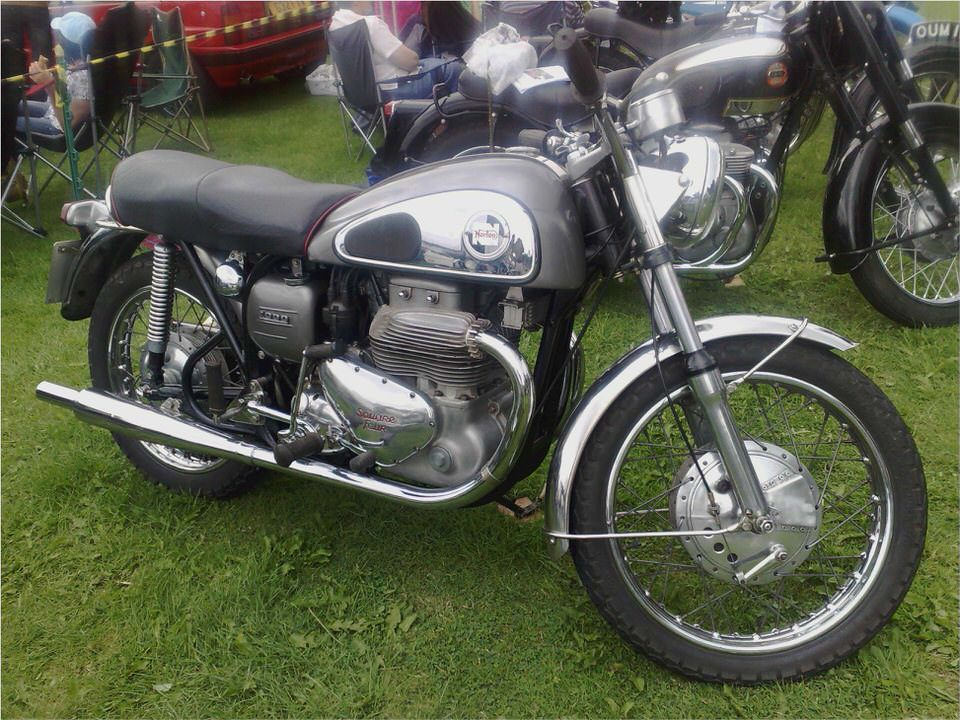
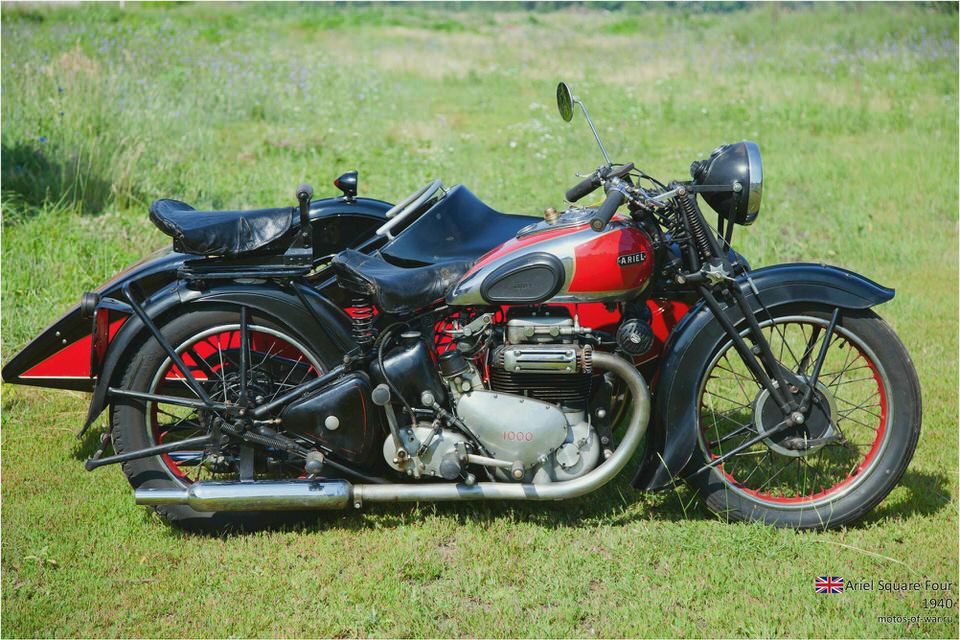
The lack of four pipes reduces the Ariel’s visual impact, but a nice example such as this one, its red-painted tank complete with knee pads in traditional fashion, is still a handsome machine. It’s slim for a multi-cylinder motorcycle, but is well equipped for touring with the likes of a generous front fender and thick dual seat. There’s a large battery on the left, and a tire pump alongside the chain guard.
From the fairly low saddle the rider looks down on a row of four circles: an ammeter in the headlight, a black-faced Smith’s speedometer, a big steering damper knob, and a small oil pressure gauge in the tank.
This bike, a well cared-for machine on sale at a London dealership for $8,500, upheld the Square Four reputation for sophistication right from the start. Turn the ignition on with the key below the seat at the right, and apply full choke to the Solex carburetor. Then, one reasonably strong kick is almost always enough to get the four-cylinder engine firing with a pleasant and distinctive twittering sound coming from the twin mufflers.
Such was this bike’s classy feel, from the moment I pulled away, that I couldn’t help imagining what sort of an impression the Square Four must have made in its earliest days on riders who, quite likely, had previously only ridden single-cylinder machines. Part of that impression is due to the good condition of this particular bike, whose sweet-running engine is epitomized by a four-speed gearbox that shifts very cleanly and even finds neutral easily. The engine’s only real weakness was the steady drip of oil that it leaked when hot.
By 1952 standards, the Ariel Square Four wasn’t dramatically fast; its top speed of about 100mph was matched by parallel twins such as BSA’s A10. Its acceleration was no better than that of the twins, either. Where the Four scores is with its smooth and punchy response to a handful of throttle at low revs, plus its generous midrange torque that gives strong acceleration for passing (more useful on today’s crowded roads than in the Fifties, I’d guess), and means the rider needs to downshift for only the steepest of hills.
It’s easy to understand how the engine’s effortless performance, combined with a smoother ride than any single or parallel twin could provide, made the Squariel (as they’re fondly called) an outstanding long-distance machine when it was new. That character was also dictated by the chassis, which gives a pleasant, comfortable ride, but not a very sporty one. The forks are rather soft and not particularly well damped, though they are fine at a reasonably gentle pace.
Ariel’s rear suspension setup combined a typical plunger design with a system of small, pivoted links intended to keep the chain in constant tension. It was reckoned to work quite well on the singles and twins, but less so on the heavier Square Four, especially when the six small bearings in each link wore, as they did very quickly. Our feature bike was rather vague and bouncy at the rear, although not so bad as to suggest that the bearings were in need of attention.
Not that there was much chance to subject the chassis to any fast cornering. On dry roads, our test bike ran out of ground clearance at very modest angles of lean, well before its tires — a blend of 19in Chen Shin front and 18in Dunlop Speed Universal rear — got close to their limits of grip. Nor were the tires taxed by maximum braking, thanks to the feebleness of the single-leading-shoe drum on each wheel.
When riding the Squariel I was always conscious of the need to leave plenty of room up ahead in case of emergency.
The other worrying moments of my test came every time I needed to put the bike on its stand. This is a rear-mounted contraption that requires the rider to walk to the back of the Square Four, keeping it vertical all the while, before putting down the stand and then heaving the bike backwards onto it. Not exactly easy to use, but at least the Ariel was very stable once on the stand.
Squaring off
This Four was one of the last of its type, because in 1953, the year after it was built, Ariel introduced an improved version—the 4G MkII. It incorporated a new cylinder head complete with four instead of two downpipes, and cooling was improved by air that now ran over the exhaust ports. Other changes included a new oil pump and a stronger dry clutch.
Reshaped pistons helped increase power to 40hp at 5,000rpm, giving the Square Four a performance boost that lifted its top speed to over 105mph in some tests.
Even in 1956, Ariel continued to update the Squariel, with features including a full-width front drum brake, headlamp cowling and quick-detach rear wheel. There were prototypes with more substantial changes too, notably a MkIII that came complete with a twin-shock rear suspension. This was never produced.
Nor, sadly, did Ariel ever get around to introducing the liquid-cooled engine that might have solved the Square Fours’ overheating problem for good.
The reason for a lack of further development was simple: Ariel, by now part of the BSA group, had made its controversial decision to abandon four-stroke production in favor of the fully-enclosed Leader commuter bike. In 1958, the year the two-stroke Leader was launched, the four-cylinder bike was dropped from the range, and an era that had lasted for almost 30 years came to an end. Nobody who had experienced the Square Four’s unique blend of performance, smoothness and sophistication would forget it. MC
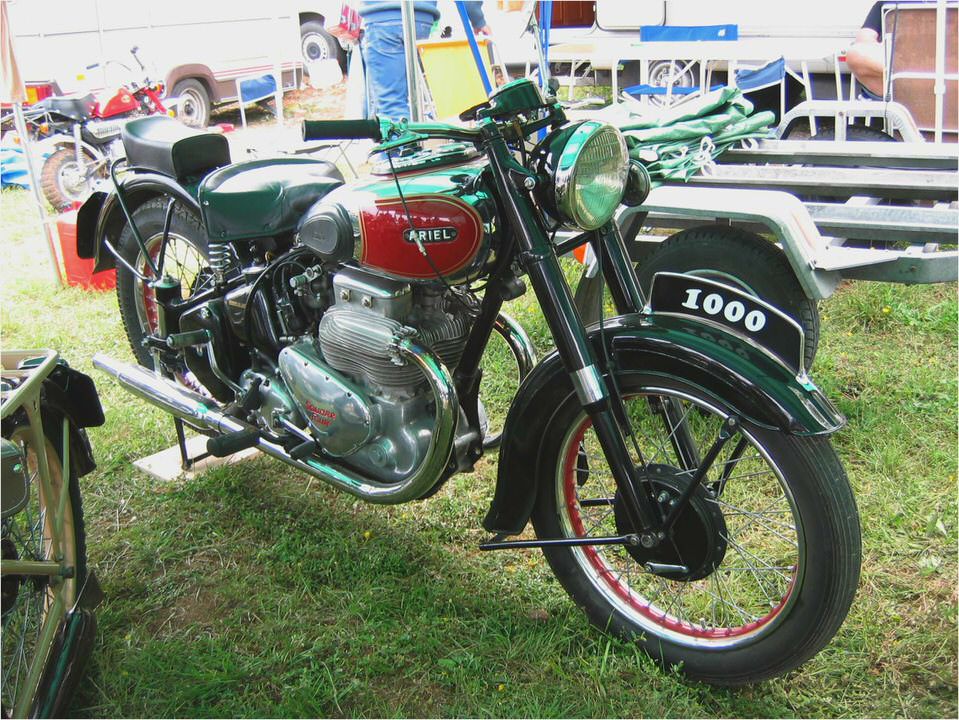


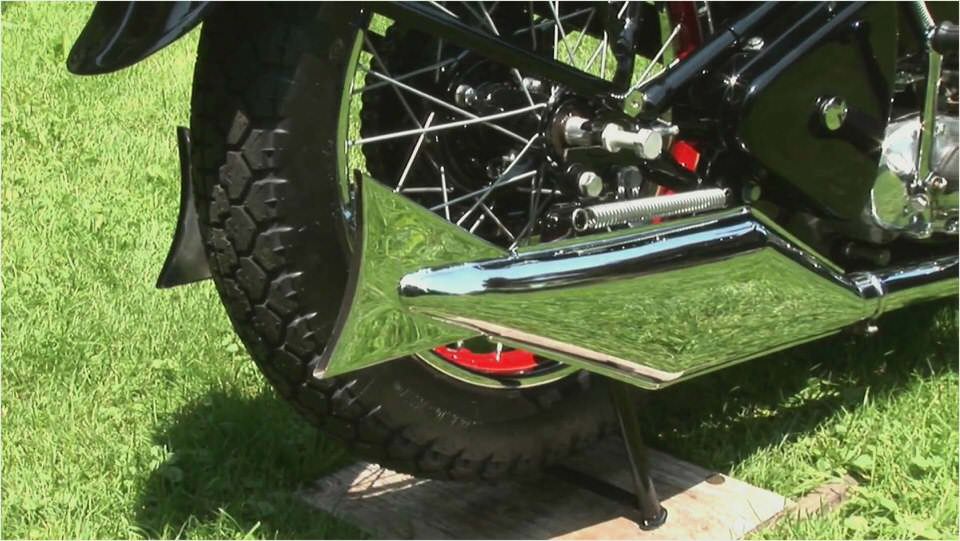
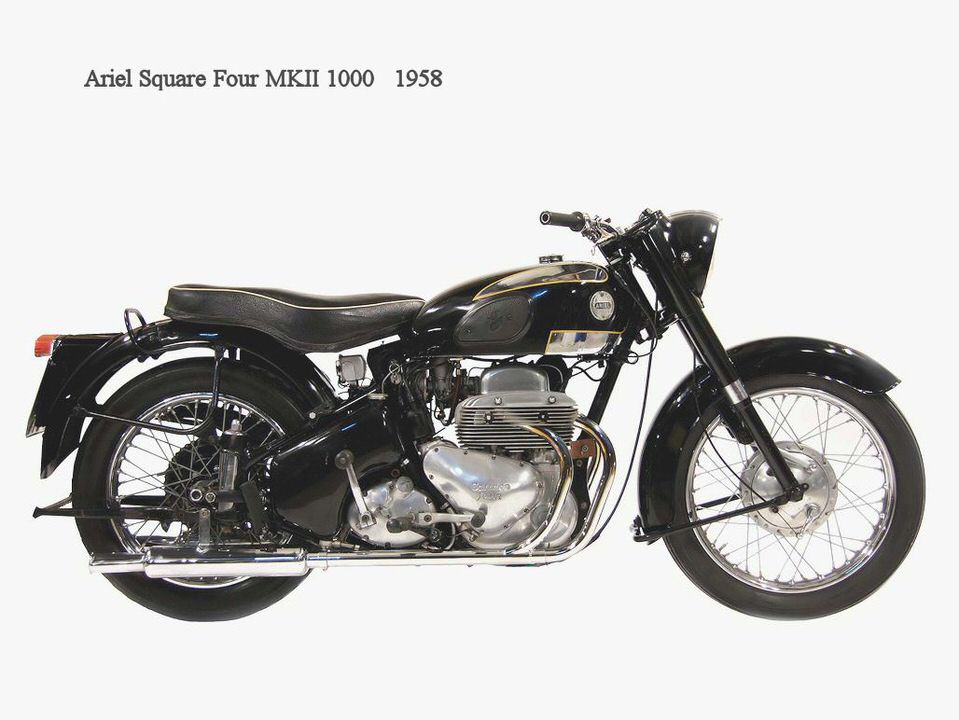
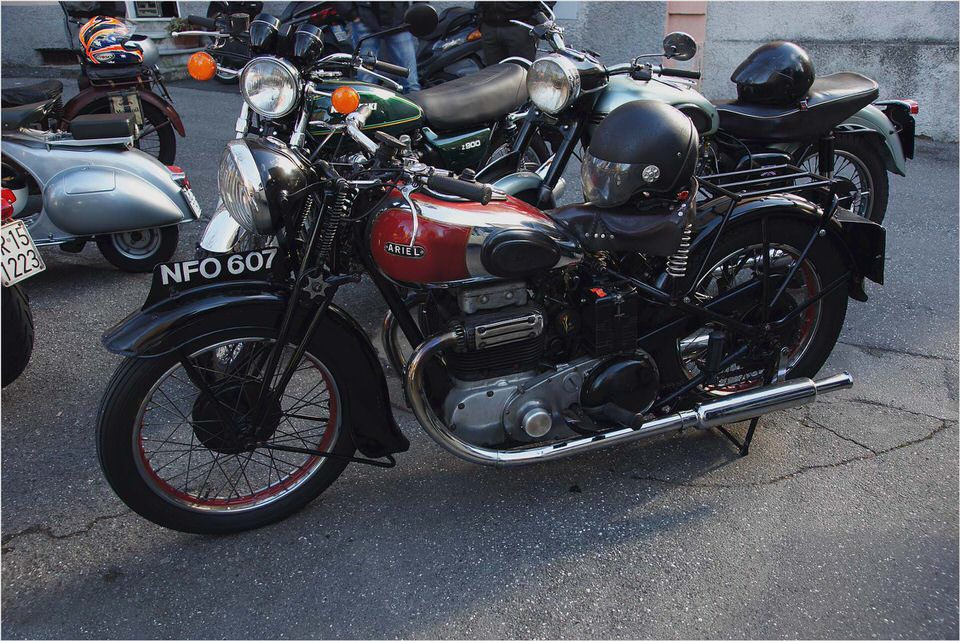
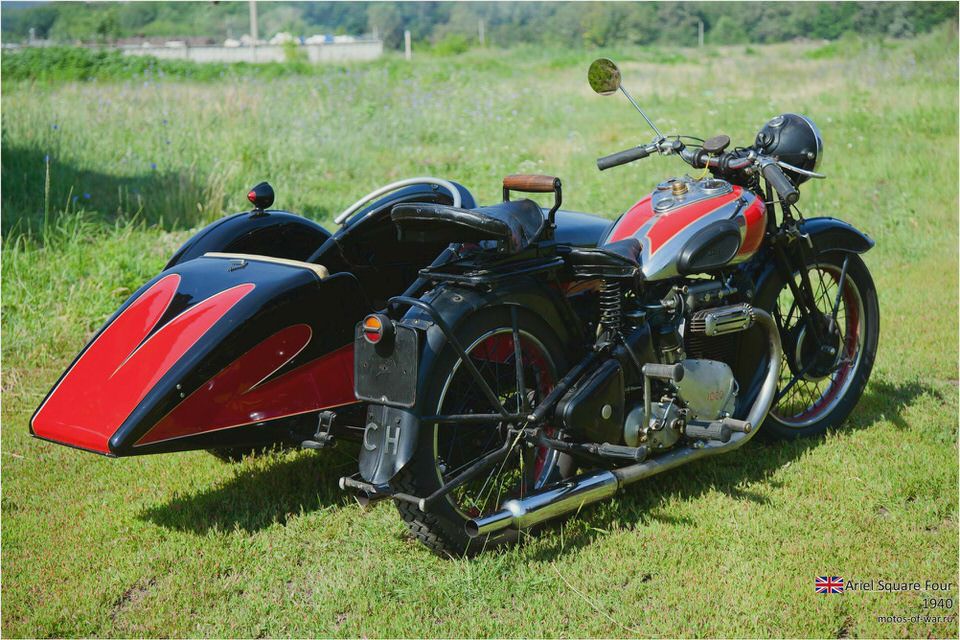
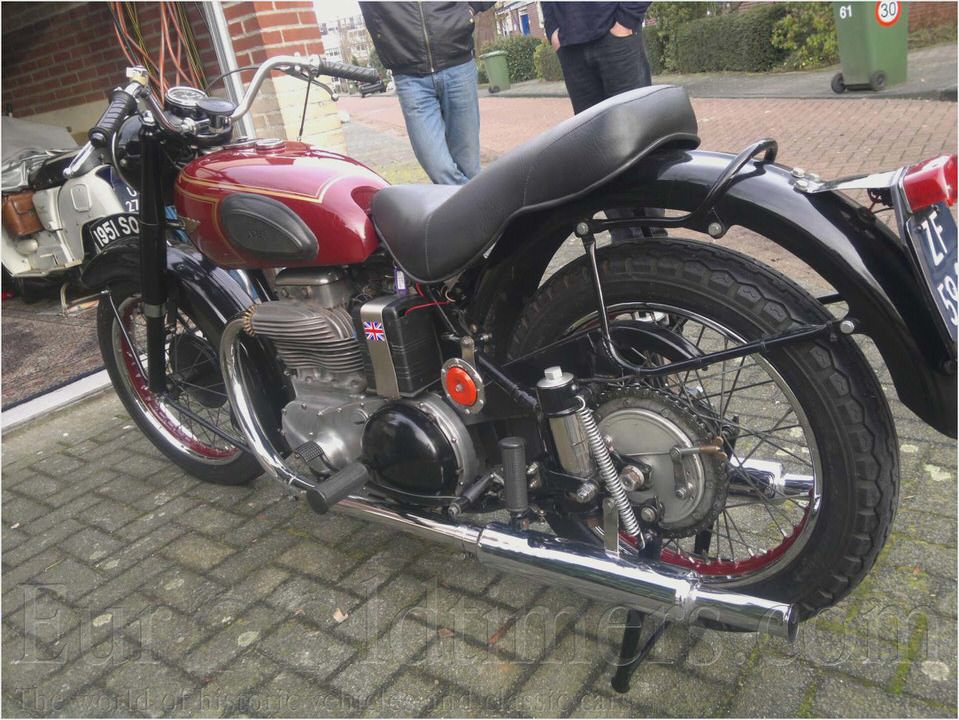
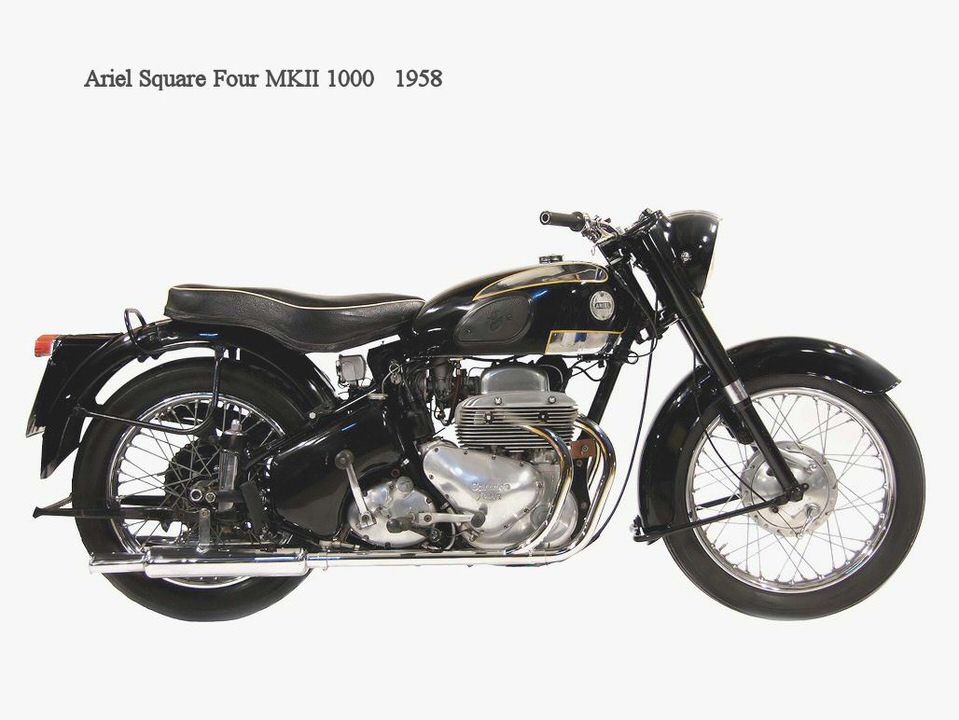

- Buy 2002 yamaha xt 225 enduro Here!
- Enduro motorcycle – Wikipedia, the free encyclopedia
- The New BMW Husqvarna 450 – Moto-Related – Motocross Forums / Message…
- 2006 450F MX Shootout – PNW Riders
- My New 1999 Atk 125!!! DIY Reviews!
